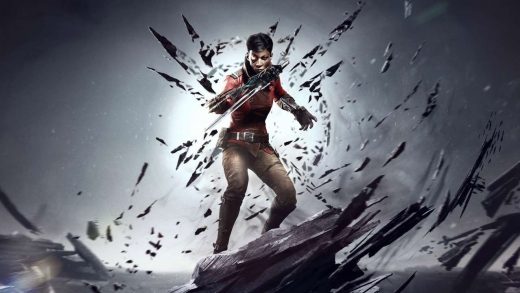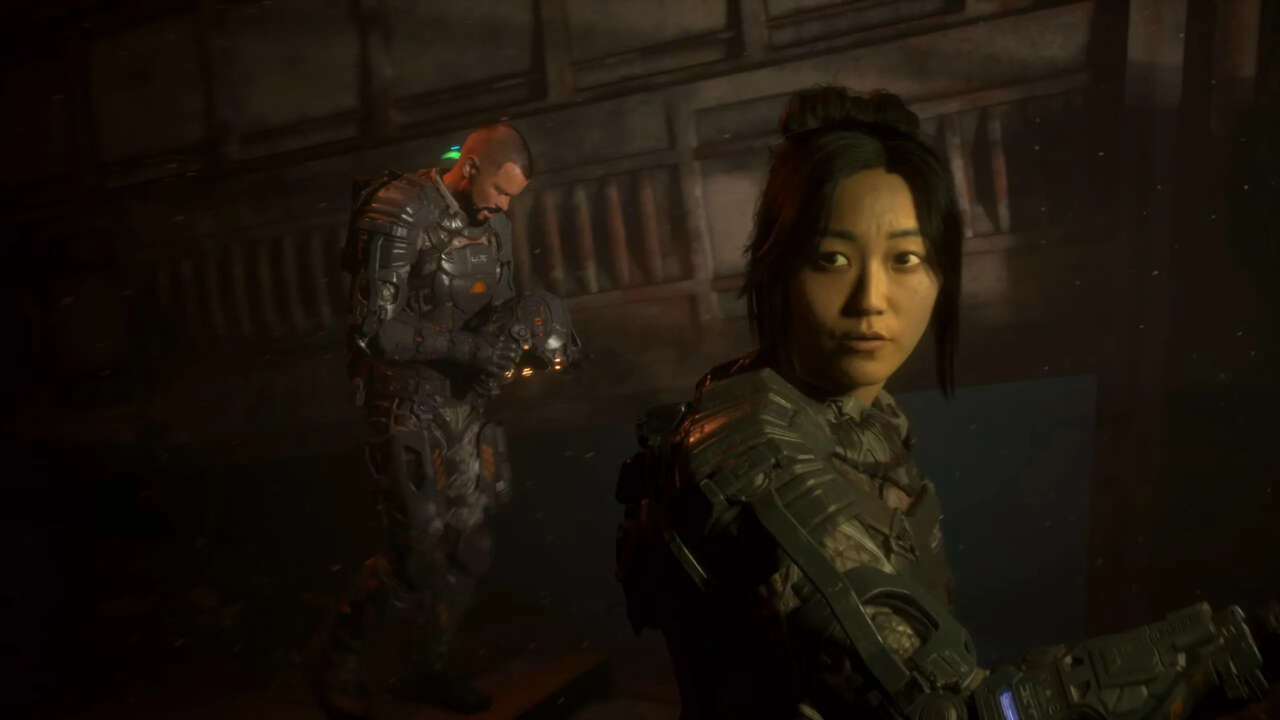
Despite releasing a full 15 years later, you could argue that The Callisto Protocol is the spiritual predecessor to Dead Space, given the original pitch from director Glen Schofield was for Visceral Games’ survival-horror title to be set within a prison, not a mining vessel. And in a lot of ways, The Callisto Protocol similarly dazzles with its incredible art direction and sound design, even emulating Dead Space’s over-the-shoulder third-person perspective and integrated HUD. However, The Callisto Protocol goes its own way by focusing on melee strikes and dodges, utilizing a combat system that feels great at first but isn’t suitable for the game’s more action-focused latter half. Plus, lengthy death animations compound the frustrations of surprise difficulty spikes, creating an experience that feels like an uneven mix of horror and action that fails to adequately commit to or excel at either.
In The Callisto Protocol, you play as Jacob Lee, a freight transporter contracted to ferry cargo for the United Jupiter Company, moving supplies from the UJC-operated Black Iron Prison on Callisto to the colony on Europa. On a routine trip back to Black Iron, Jacob’s ship is boarded by Outer Way, a group blamed for a recent terrorist attack on Europa. In the ensuing struggle, Jacob and Outer Way leader Dani Nakamura are the only survivors, stranded on Callisto. They’re both picked up by Black Iron security head Captain Leon Ferris and incarcerated in the prison on orders from warden Duncan Cole. Jacob awakes in Black Iron hours later, discovering a mysterious infection has been released into the prison, transforming the prisoners and guards into biophage monsters. Escaping from his cell, he teams up with fellow prisoner Elias Porter to find a way out.
The Callisto Protocol doesn’t devote too much time to storytelling and worldbuilding. None of the characters (save for Elias) are especially likable, and though the main villain has an intriguing motivation–you can clearly see how The Callisto Protocol was originally intended to fit into the PUBG: Battlegrounds‘ universe once you find out what the bad guy is up to–it’s only revealed right as the game is concluding. I wish it had been revealed far sooner because, though the ramifications of it are interesting, there’s not enough space in the plot for those ramifications to be explored. The game fleshes out the world up to that point with optional audio logs to discover, but most don’t actually reveal all that much, and those that do aren’t very interesting to listen to. It’s ultimately not worth going off the path in pursuit of these collectibles.
The Callisto Protocol features a combat system heavily focused on melee attacks and dodging while also keeping a careful eye on resources and health. This encourages a hyperaggressive fighting style where getting within clawing range of the threat and overwhelming them with a quick but controlled beating is the key to success. Dodging is fairly simple to pull off, though curiously assigned to the same stick used to control Jacob’s movement. Not only do you use the left stick on a controller to move Jacob, but pushing it to the left or right as an enemy attacks you is how you dodge in either direction. In one-on-one encounters, this isn’t too much of a problem–you’re facing the threat at hand and moving or dodging accordingly. But it becomes unmanageable when confronted with larger groups of enemies. When you’re surrounded by multiple biophages, turning to keep track of an enemy could cause you to dodge an attack from a different enemy instead, potentially repositioning you into a disadvantageous corner and twisting the camera away from the threat you’re trying to track. It doesn’t happen every time, but it happens enough to be frustrating, and in a game as difficult as The Callisto Protocol, losing track of your positioning even for a moment can result in taking game-over-inducing damage.
The integrated HUD works against The Callisto Protocol’s combat in this regard. Much like Dead Space, The Callisto Protocol doesn’t feature a traditional user interface. Instead, Jacob’s health is conveyed via the life support system grafted to the back of his neck. And instead of an ammo counter in the bottom corner of the screen, it’s displayed as a holographic projection on whichever gun Jacob is holding. In a game like Dead Space where protagonist Isaac Clarke is battling necromorphs from a controlled distance, it’s a lot easier to quickly glance at the displays on Isaac’s armor and keep an eye on the approaching necromorphs, weighing the situation against your current health and ammo count. It also helps that Isaac doesn’t really move when firing any of his weapons, managing to keep all his systems in clear view at all times. But in The Callisto Protocol, Jacob is moving around a lot more, twisting his body as he dodges attacks or swings his stun baton within the throes of close-quarters combat. It’s difficult to keep track of your resources because not only is the threat at hand more immediate, the displays detailing the relevant information are moving around more.
If you happen to miss that your health bar has devolved from a healthy green to a flashing red in the midst of a fight, you’ll be unaware that the next hit you suffer will likely be your last. On any difficulty, the biophages hit hard and fast. Most of The Callisto Protocol’s horror comes from the unskippable death animations you’re subjected to when Jacob dies, all of which are gruesome. But after the second or third time one happens, these death animations lose their shock factor and become tedious–and if you’re stuck on one difficult combat encounter or challenging boss fight, they’re quite frustrating. The first time I saw Jacob’s head getting caved in, I grimaced, but by the third or fourth time, I just wanted the game to load the encounter again. I’ve seen Jacob die. It’s gross. I get it. Don’t waste my time and just let me try again, or at least allow me to skip any death animations I’ve already seen. The most egregious of these examples occurred when an autosave checkpoint locked me into a fight against a miniboss where Jacob only had a sliver of health, and so I had to watch him get stomped to death almost a dozen times as I tried to just understand what I was supposed to do to overcome the threat. Thankfully, nothing that bad ever happened again, but it’s irksome that The Callisto Protocol really only horrifies through failure. There’s nothing about the actual experience that’s all that scary or horrific save for the gruesome nature of how Jacob can die, which only curates irritation, not fear.
The Callisto Protocol opts for cheap jump scares way more often than it should, even repeating the same scares numerous times. Some of these I do like–hearing a biophage rummaging through the vents and desperately turning every which way in a vain attempt to track its movements, only for it to burst out of the floor behind me is a thrill. But having a little screaming slug burst out of a closed locker a dozen times across the entirety of the game is a bit much. Having it happen once or twice would have been enough to make me weary of opening lockers in search of ammo, but their actual frequency only ensured I expected it to always happen. And a scare isn’t all that scary when you’re already expecting it.
As you continue to explore Black Iron, you find blueprints for new firearms, allowing Jacob’s arsenal to evolve through the magic of Black Iron’s futuristic 3D printers. Alongside the stun baton, Jacob acquires a host of firearms and the GRP device (a gravity-manipulating gauntlet used by Black Iron guards to control prisoners that Jacob repurposes as a weapon). Right around the time you acquire the GRP device, The Callisto Protocol’s combat is at its absolute best. During those early chapters, you’re repeatedly threatened with two or three hard-hitting enemies at a time, and your trusty sidearm and GRP can give you great crowd control when your dodges won’t cut it alone.
New avenues of combat open up with the addition of these weapons, too. Landing several melee attacks on an enemy in a row will temporarily stun them, for example, opening them up for a precision shot from your firearm that deals extra damage and can carve off the arms or legs of your foe. This can significantly alter your situation–a biophage without legs will have to slowly crawl its way toward you, for instance, while one missing an arm doesn’t have as much offensive potential. Alternatively, the GRP can be used to pick up and launch biophages into environmental hazards like spinning fan blades or spike-lined walls. There’s an especially cool moment where Jacob has to fight his way down a hallway as enemies steadily approach from the other side one-by-one, and methodically pushing through them with murderous swings of the stun baton, a few well-placed shots, and the occasional use of the GRP is exhilarating. The game sadly never quite delivers on the thrill of that moment ever again, but it’s a shining example of what The Callisto Protocol could have been throughout its runtime.
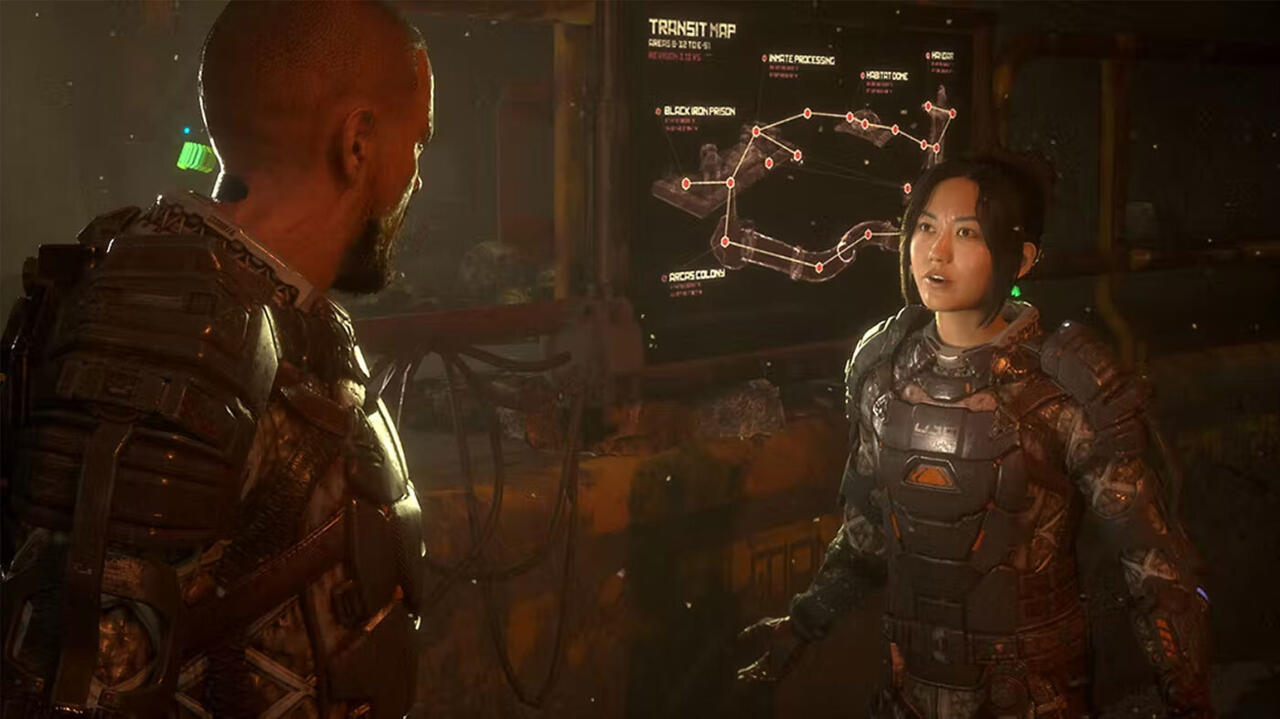
Instead, about midway through The Callisto Protocol, you start facing much larger groups of enemies in wider spaces where biophages come at you from multiple sides, and the game’s carefully curated combat quickly devolves, reducing your options in combat to mindlessly swinging and quickly blasting off a precision shot whenever the indicator pops up. As enemies grow more plentiful, Jacob starts finding firearms with wider and harder-hitting bullet spreads, like a shotgun and railgun, encouraging you to abandon precision even further in favor of just dealing damage as quickly as possible in order to survive. It’s not especially challenging to simply swing with abandon, dodge when you can, shoot your gun without really aiming, and hope for the best, and it’s not very fun either.
The precision shot suffers in these situations as well. The mechanic is designed to reward quick reflexes and, of course, precision, as you only have a brief moment to pull it off before an enemy recovers. It’s mechanically simple to do–after stunning an enemy, a small indicator will appear on them and if you pull out Jacob’s equipped firearm at that exact moment, his aim immediately snaps to that spot, and then you just pull the trigger. But between Jacob’s movements and the constant squirming of enemies, the auto-aim feature can’t reliably snap your aim to where a precision shot should land. An enemy doesn’t stand still as they stumble backward stunned, for example, but the precision shot doesn’t take those small movements into account and has Jacob fire toward where the weak spot was initially. It’s at least more manageable to pull off precision shots with full manual aim where you quickly line up the shot yourself, but within the more crowded combat encounters, you don’t always have the time or space to do so.
As a whole, the design of The Callisto Protocol’s combat falls apart once you start facing swarms of enemies who are coming at you from all sides. Almost every aspect of combat takes a lot of time and leaves Jacob vulnerable–switching weapons sees him dissemble his current firearm and put together whatever you’re switching to, for instance, and healing forces him into a crouch where he slowly injects himself with a healing salve. The game is encouraging you towards being selective in your movements and actions, carefully managing your ammo and health in between your attacks, but you can’t regularly do that because enemies are constantly trying to get into melee range and kill you. The GRP device can create some much-needed space for yourself when facing one or two enemies, but since it can only grab one enemy or object at a time, effectiveness significantly drops in larger crowds. Mechanically, it feels like The Callisto Protocol wants to be a methodical survival-horror experience, but the design of enemy combat encounters in the latter half of the game feels geared toward fast-paced action.
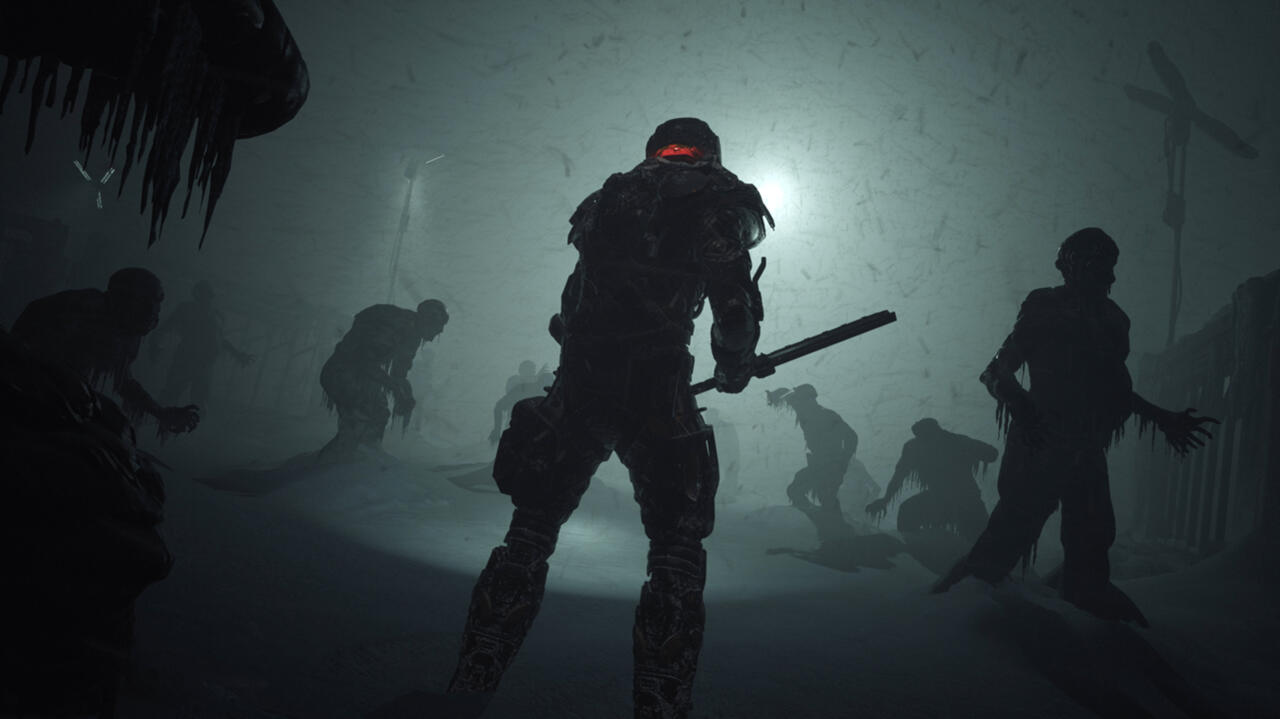
There’s a huge tonal whiplash in The Callisto Protocol around this point, too. Jacob gives other action game protagonists a run for their money, managing to survive numerous death-defying stunts like weaving through falling debris as a tower collapses around him, squeezing past spinning fans while getting washed down a sewer drain, and battling wave after wave of biophages on a speeding tram car. And all the while he does it with a few muttered curses and a couple of scratches–if it weren’t for all the lengthy death animations I had to suffer through, I’d be convinced Jacob’s body is unbreakable.
As the game races towards its finish, The Callisto Protocol ratchets up the action, not the tension it had so carefully curated in its opening moments, fully distancing itself from horror and embracing the violently absurd. It all culminates in two final chapters filled with challenging miniboss fights (sometimes almost back-to-back) and a frustrating final battle so detached from where The Callisto Protocol started that it feels like you’re playing a completely different game. As Jacob was pumping energy blasts into the face of the two-story final boss with his assault rifle and explosive rounds shotgun, tanking acid spit thanks to his power armor, I had to pause and wonder how I’d arrived at such a situation. Not once did I have to swing the stun baton in that fight–The Callisto Protocol had just become a third-person action shooter, abandoning the core concept it originally built its combat around. Any of the enjoyable fear and tension I’d experienced in the early chapters had been gone for hours at that point.
To be fair, The Callisto Protocol does change things up for one level in the latter half of the game, trapping Jacob in a series of tunnels filled with biophages who are blind but sensitive to noise, thus encouraging you to approach encounters with stealth instead of the usual swinging and shooting. It’s a somewhat enjoyable change of pace–The Callisto Protocol’s stealth mechanics aren’t anything to write home about, but having a level exclusively focus on them does at least satisfyingly break up the high-octane action for a spell. The level only lasts for a short time, though, and soon you’re back to the less entertaining action-focused set pieces from before.
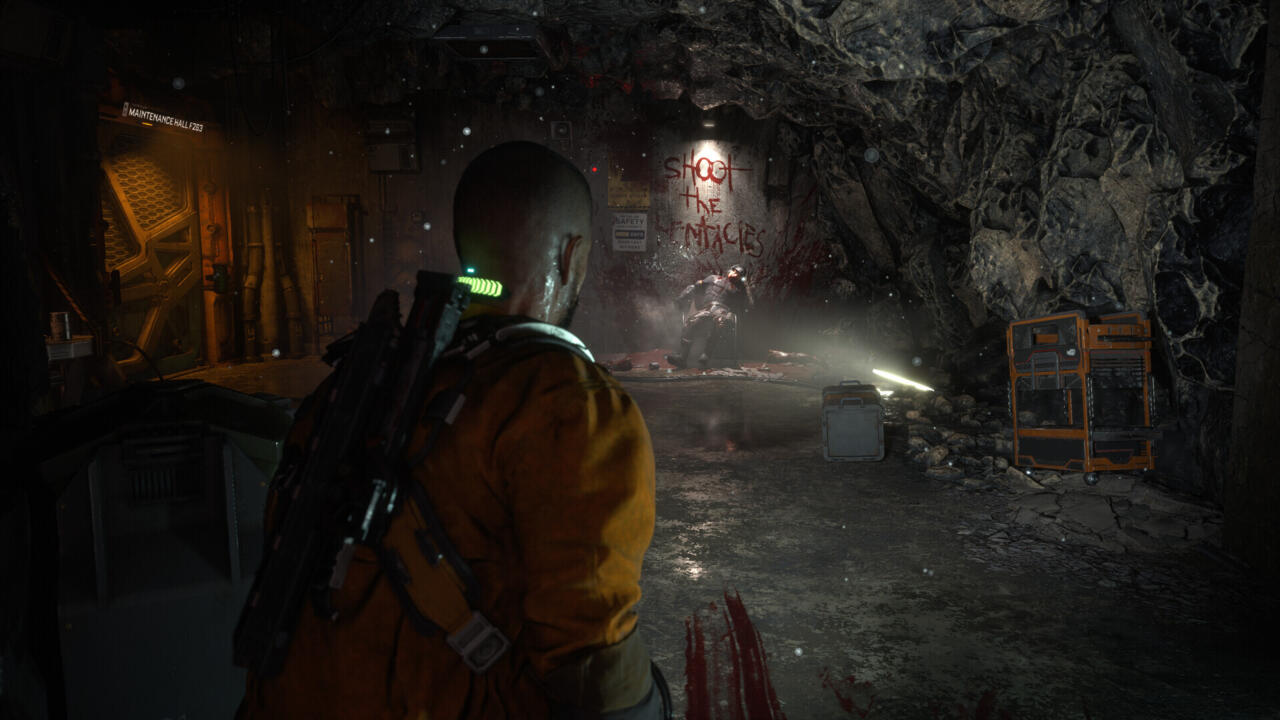
The Callisto Protocol is a very pretty game when you pause between the biophage smashing to take a look at it. When Jacob gets his first good glimpse at Jupiter, I was struck by just how beautiful the view was, the planet’s striking image suspended imposingly over the tiny moon of Callisto, much like the UJC’s massive influence hangs over what’s happening in Black Iron. Character models are rendered in incredible detail as well, especially the main cast–when Jacob is talking to Dani, it looks like their actors, Josh Duhamel and Karen Fukuhara respectively, speaking to one another. The mocap work is at its best in Sam Witwer’s performance as the antagonistic Ferris, whose face twists with malicious glee as he abuses Jacob, or takes on a cold air when discussing concerns that don’t impact him. Witwer’s portrayal of Ferris’s slow descent into madness is easily one of the best parts of the game, and I wish the corrupt prison guard had shown up in the story as a recurring villain more often than the three times he did.
The sound design is also impressive, with 3D sound mapping the noises of a space so that you can hear an enemy winding up for an attack and identify every biophage type by the distinct noises they make–a huge advantage given how dark or foggy most of The Callisto Protocol’s environments are. Jacob’s weapons crunch against the enemy bone with a twisted snap and melt skin with a crisp sizzle as well, providing a welcome auditory cue for when you hit your mark. In the frantic melee of most fights, the sound design saved me on more than a few occasions.
Overall, individual elements of The Callisto Protocol are just at odds with one another too often. The enemy design and melee-focused combat mechanics lend themselves to these incredibly tense and fun close-quarters brawls when you’re only fighting against a couple of targets at a time, but the game regularly locks you into frantic moshpits or frustratingly difficult boss fights instead. And despite the vocal talent and mocap skill on display, The Callisto Protocol’s story isn’t all that interesting, save for an intriguing final twist. Some genuine horror might have improved the experience of this survival-action game, but The Callisto Protocol instead leans too far into absurd high-octane spectacle, dampening the tension and adulterating the narrative core of the experience.
